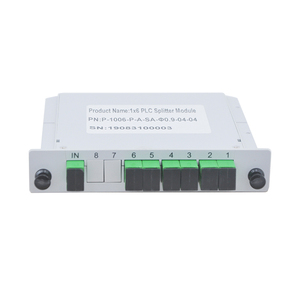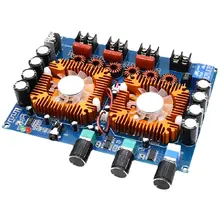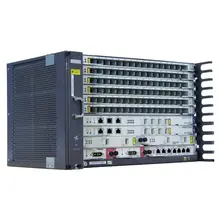Understanding the 1*6 PLC Splitter
The 1*6 PLC splitter is a pivotal component in modern fiber optic networks, designed to evenly distribute optical signals to multiple destinations. Predominantly utilized in passive optical networks (PON), this splitter is engineered to split a single input signal into six output signals, maintaining uniform power distribution across all ports.
Types and Configurations
PLC splitters come in various forms, with the 1*6 PLC splitter being a common configuration. This type of splitter can be integrated into different packages, including box, module, rack-mount, and wall-mount options, catering to diverse installation environments and requirements.
Applications and Uses
Splitting optical signals in telecommunications, the 1*6 PLC splitter is essential in FTTH (Fiber to the Home) networks, local area networks (LAN), and cable television (CATV) systems. Its role is crucial in extending a single optical signal to multiple premises without significant loss of quality or bandwidth.
Features and Materials
The construction of a 1*6 PLC splitter involves high-quality silica optical fiber, ensuring minimal insertion loss and excellent durability. Advanced waveguide technology allows for a compact design, making it suitable for space-constrained applications while providing a stable splitting ratio across a wide wavelength range.
Advantages of Using 1*6 PLC Splitters
Employing a 1*6 PLC splitter in a network setup offers the advantage of minimal signal loss compared to traditional couplers. Its scalability and reliability make it a preferred choice for network expansion and its passive operation requires no external power, which enhances network efficiency and reduces maintenance costs.
Selection Considerations
When selecting a 1*6 PLC splitter, it is important to consider factors such as the operating wavelength, insertion loss, and return loss to ensure compatibility and performance within the intended application. The physical form factor should also be taken into account to match the specific deployment scenario.











































 浙公网安备 33010002000092号
浙公网安备 33010002000092号 浙B2-20120091-4
浙B2-20120091-4